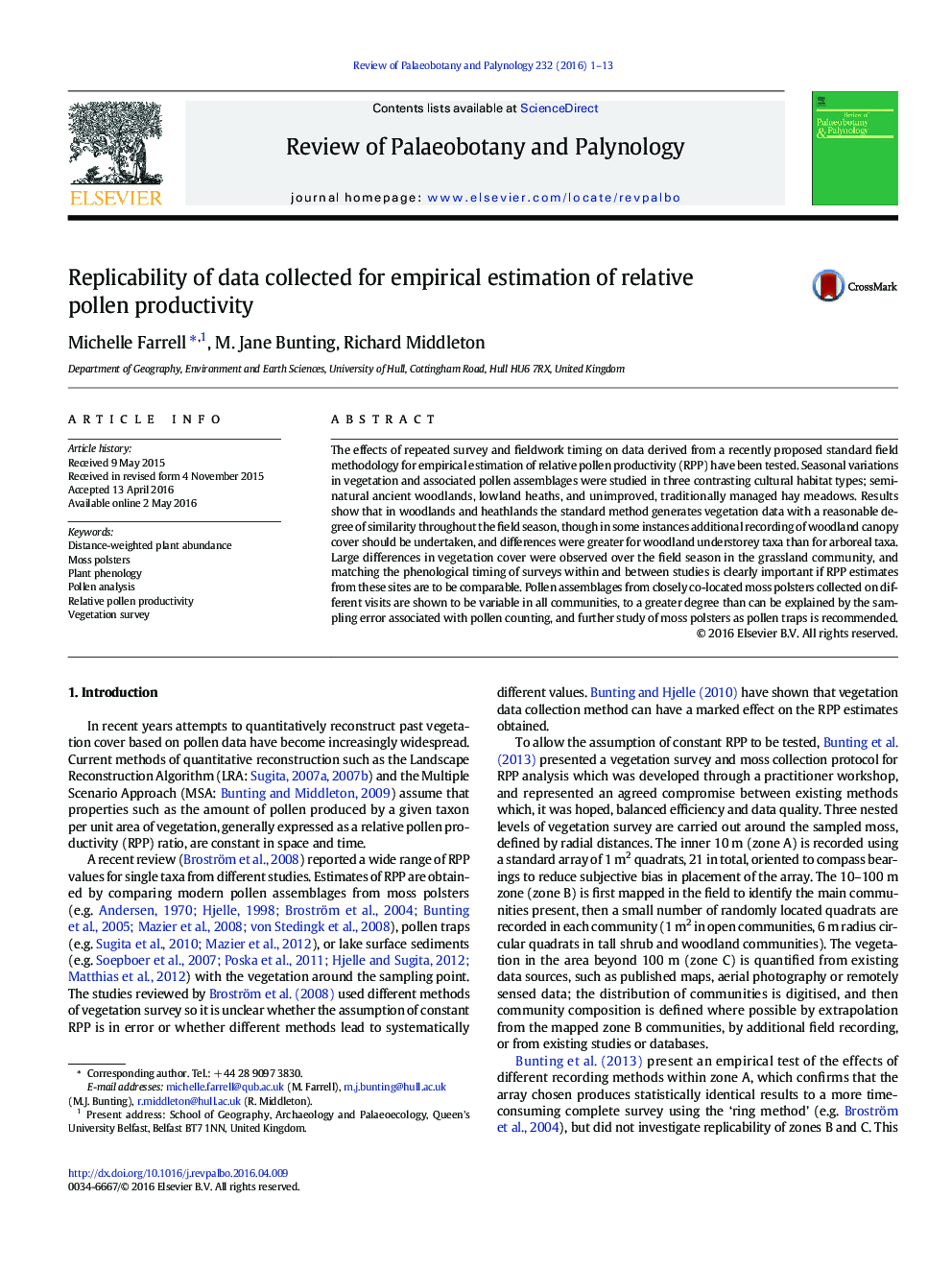| Article ID | Journal | Published Year | Pages | File Type |
|---|---|---|---|---|
| 4750076 | Review of Palaeobotany and Palynology | 2016 | 13 Pages |
Abstract
The effects of repeated survey and fieldwork timing on data derived from a recently proposed standard field methodology for empirical estimation of relative pollen productivity (RPP) have been tested. Seasonal variations in vegetation and associated pollen assemblages were studied in three contrasting cultural habitat types; semi-natural ancient woodlands, lowland heaths, and unimproved, traditionally managed hay meadows. Results show that in woodlands and heathlands the standard method generates vegetation data with a reasonable degree of similarity throughout the field season, though in some instances additional recording of woodland canopy cover should be undertaken, and differences were greater for woodland understorey taxa than for arboreal taxa. Large differences in vegetation cover were observed over the field season in the grassland community, and matching the phenological timing of surveys within and between studies is clearly important if RPP estimates from these sites are to be comparable. Pollen assemblages from closely co-located moss polsters collected on different visits are shown to be variable in all communities, to a greater degree than can be explained by the sampling error associated with pollen counting, and further study of moss polsters as pollen traps is recommended.
Related Topics
Physical Sciences and Engineering
Earth and Planetary Sciences
Palaeontology
Authors
Michelle Farrell, M. Jane Bunting, Richard Middleton,
